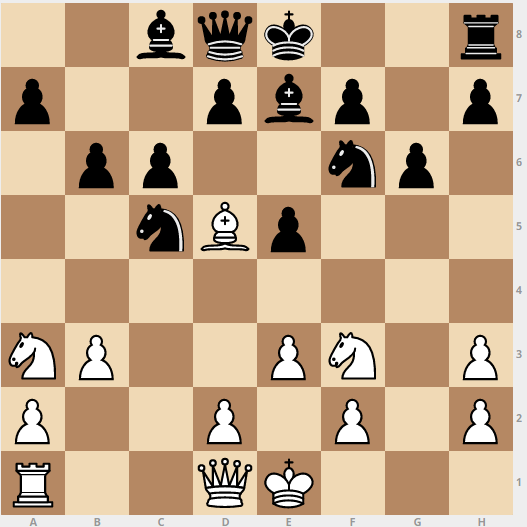The Case Of The Dropped Pawn

A white pawn had been accidentally knocked off the board. Neither player could remember for sure on which square it stood. If neither king has yet moved, where is the pawn?
This problem was inspired by the book Chess Mysteries of Sherlock Holmes by Raymond Smullyan.
This problem is the first one of the set Retrograde Chess .
This section requires Javascript.
You are seeing this because something didn't load right. We suggest you, (a) try
refreshing the page, (b) enabling javascript if it is disabled on your browser and,
finally, (c)
loading the
non-javascript version of this page
. We're sorry about the hassle.
Black is missing one rook, which was captured by the pawn on h3. Since the Black king has not yet moved, how did the rook get out to be captured? Only by the pawns on b6 and c6 cross-capturing to let it out—i.e., the pawn on b6 came from c7 and the pawn on c6 came from b7.
Now, the Black rook could not get out until after the capture on c6, because as long as the pawn on c6 was on b7 the bishop on f5 was on c8 and confined the rook to the squares a8 and b8. Thus the capture on c6 was made first, then the rook got out, and then came the capture on b6.
White is missing a bishop and a rook (the missing White pawn should really be on the board, although we don't yet know where). The missing White bishop traveled on black squares, hence was captured on b6. So the missing White rook was captured on c6. Thus the White rook was captured before the Black rook got out to be captured on h3, and therefore before the White pawn (coming from g2) made its capture on h3. But before the capture on h3, how could the White rook have gotten out since the White king has never moved?
The only answer is that the White rook now on a1 is really the King's rook, and hence it was the White queen's rook which got captured on c6!
The sequence was this: First the White queen's rook got captured on c6. Then the Black rook got out and got captured on h3. Then the rook from h1 got out and came around to a1. We now see that it was the White queen's rook that was captured on c6, and we recall that the White king has never moved. Therefore the White pawn we are trying to locate cannot be on c2, since if it were, the White queen's rook could never have gotten out to be captured. Nor can it be on c3, since a cross-capture of this pawn and the one on b3 is not possible, because the only missing Black piece has been captured on h3. However, the White pawn we are trying to place must be on the c-file, because it was originally from c2, and had no Black pieces to capture to get onto a different file. Therefore it must be on either c4 or c7. It can't be on c7 because the Black pawn on c6 was there before the pawn on b6, hence there was always a Black pawn on c6 or c7, and the White pawn could never get around them. Thus the White pawn must stand on c4.